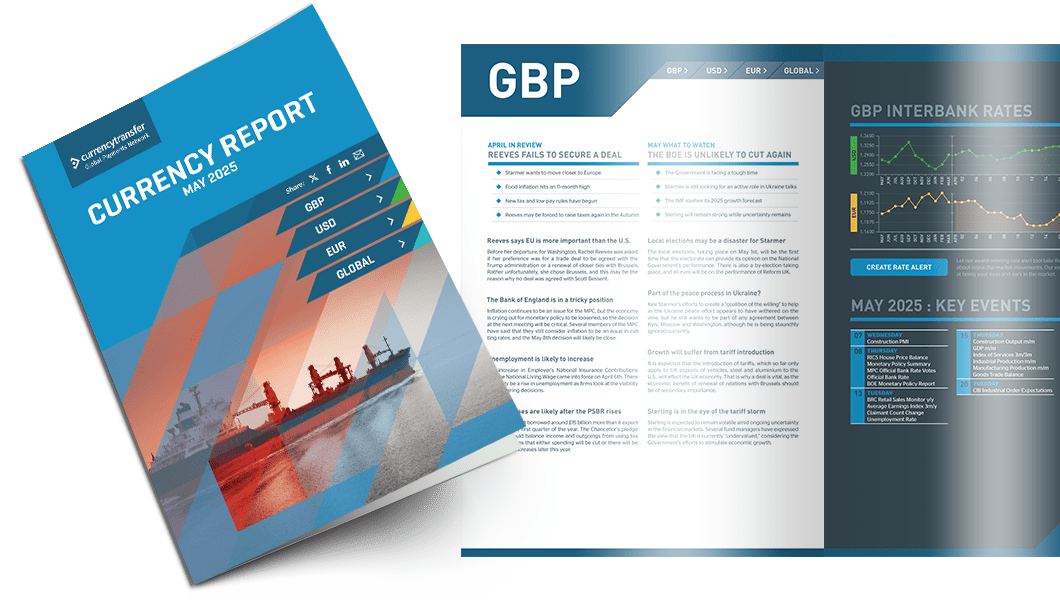
Highlights
- SME bosses are increasingly confident
- The economy is continuing to strengthen
- The German economy is still in decline as VW considers closing plants
The BoE Governor is determined to sail a steady course
Bailey has been accused of being tentative throughout his tenure. Still, to his credit, he has presided over the Bank bringing inflation back to its target of 2% despite having to deal with several demanding situations.
Rishi Sunak’s support for the economy when he was Chancellor during the Covid Pandemic began a surge in inflation exacerbated by the surge in energy prices, which has only now settled down.
He has recently said that “it is too early to declare victory” over inflation, but the risks of persistent inflation appear to be receding, while the threat from secondary inflation has been less than the Committee had expected.
His comments portray a degree of comfort with the current situation, despite the recent inflation from 2% to 2.2%.
The data published over the next two or three weeks will be vital to further loosening monetary policy since Bailey is unlikely to be persuaded to change his position following one month’s data.
Bailey’s colleague at the Bank of England, Sarah Breedon, the Deputy Governor for Monetary Policy, created something of a surprise when she voted for a cut in rates at the last meeting.
In the past, she has spoken of the need for monetary policy to reflect the reality of the inflation picture, although she has not commented on why she felt it was time for rates to be cut last month.
It is considered unlikely that interest rates will return to the ultra-low levels seen between March 2020 and November 2021 when the base rate of interest was 0.1%.
The dynamics of the economy are such that the parameters are constantly changing not only in the UK but also globally.
The conflicts in Ukraine and Gaza, as well as Russian interference with the flow of gas to Europe, will continue to drive inflation, while it is still unclear how fiscal policy in the UK will affect prices.
The pound lost ground yesterday and is now threatening its short-term support level. It reached a low of 1.3087 but recovered to close at 1.3113.

Read our latest currency report
Most impactful events planned this month and how they could impact your business
The timing of the first cut is not in question, but now its size is
It appears that the market has managed to convince itself that if the headline figure for job creation that will be central to the August Employment Report is “disappointing” the more dovish members of the FOMC will vote to cut rates by fifty points, despite their having been no allusion to that course of action from a single member of the committee.
While it remains a possibility that a fifty-point cut will take place, the signal that such a move would send to the market about the Fed’s view of how the economy is likely to perform going forward would betray both the data that has been published so far for the third quarter and create concern a significant slowdown and possibly a recession may be on the horizon.
It is considered unlikely that based on one speech in which he acknowledged that it may be time for monetary policy to be loosened, Jerome Powell would have changed his opinion so dramatically that he would sanction a fifty-point cut, particularly since the evidence of a slowdown is purely anecdotal, and been provided by those who have a vested interest.
The market is not considered a “jumbo” rate cut since it is still getting its head around the fact that rates will be cut at all later this month when the economy is growing close to its long-term trend.
Yesterday’s data releases showed that while manufacturing output is still in contraction it remains constant, while manufacturing orders are in the doldrums. That should not cause major concerns at the Fed.
Data for factory orders is being published later today and strong numbers are expected, rising from -3.3% last month to 4.7% in August.
The JOLTS data for job openings will also be released later and are expected to be unchanged at 8.1 million. In the current environment, this should be considered positive.
The dollar index is “chipping away” at the losses it has made over the past two to three weeks, yesterday reaching a high of 101. 95 and closing at 101.75. While its path higher will not be linear, as the market continues to consider relative economic performance from G7 members, its path higher should be gradual but solid.
A fifty-point rate cut is not out of the question
While it is unlikely to abandon its hawkish values, a fifty-point cut is considered more necessary in Europe than in the U.S.
With its largest economy likely to already be in recession and growth being subdued in the rest of the Eurozone, the overall economy needs the boost that a policy surprise would provide.
It is difficult not to look at the state of the Eurozone economy through a “German lens”. Its economy is suffering to such an extent that one of its most reliable performers, Volkswagen, is considering downsizing and closing production facilities.
German Economy Minister Robert Habeck is in contact with Volkswagen, a ministry official said on Tuesday, after the carmaker announced it was weighing the closure of plants in Germany and planning to scrap a job security scheme.
Germany’s “social contract” means that decisions must be made in close consultation with the social partners and must keep in mind the goal of ensuring that Germany is still a strong automotive centre.
The contraction of the economy so far this year should be considered a wake-up call to the Government, according to the Bundesbank President.
Joachim Nagel called upon Olaf Scholz to implement the growth initiative that it has been discussing for “some months” to ensure that the economy does not fall into a deeper recession that was seen towards the end of last year.
Members of the ECB’s Governing Council are still at odds over the outlook for the Eurozone economy. The pivot that is taking place in the U.S., where the focus of the Central Bank has switched from inflation to growth, is still the subject of significant discussion in Frankfurt.
The ECB, having cut interest rates in June, is fairly certain to ease again in September as deflation continues. However, policy decisions further down the road are likely to be more complicated as the Eurozone economy enters a more precarious state.
The Euro has lost the “sparkle” it was displaying just a couple of weeks ago as Central Bankers return from their summer holidays and are faced with the reality of a slowing economy in need of the boost that a rate cut would provide.
The single currency fell to a low of 1.1026 yesterday and closed at 1.1043.
Have a great day!

Exchange rate movements:
03 Sep - 04 Sep 2024
Click on a currency pair to set up a rate alert
Alan Hill
Alan has been involved in the FX market for more than 25 years and brings a wealth of experience to his content. His knowledge has been gained while trading through some of the most volatile periods of recent history. His commentary relies on an understanding of past events and how they will affect future market performance.